FOR SALE SOLD
11:Metre One Design

FUN - FAST
RACE READY - PROVEN WINNER
EXCELLENT CONDITION - FRESH WATER ONLY
The 11:Metre One Design is a great boat for racing and day sailing. Comfortable, responsive and easy to sail.
Fresh bottom job, full instrumentation, Genoa, high-tech lines (several new), many improvements, outboard, stereo, trailer, LOTS of parts & extras. Very consistently and well maintained. Wasabi has been a very active and successful racer since 1993. The masthead spinnaker and oversized pole makes downwind sailing a thrill. Acceleration is superior and she planes readily in moderate air.
WASABI - THE MOVIE (Smaller, dial-up version)
Link to The WASABI team web site Link to the sales brochure http://www.sailingtexas.com/s11metreonedesign100.html
(click photo to see a larger image)

Length: 33'-8" Beam: 8'-2" Draft: 5'-11" Displacement: 3,600 pounds ISAF International one-design Class Designer: Ron Holland, Sweden Builder: Precision Yachts, Florida Lake Travis PHRF: 69
_small.jpg)
Package Price: $22,000
Location: Austin, TX (Lake Travis)
Contact: John Mandell, 512-258-2008 [email protected]
Additional details:
- Sail inventory: Main: 3, full battens. Current main in excellent condition Genoa: 3 (one very good, one heavy, one tired) Jib: 3 (one excellent class sail, one experimental, one tired) Spinnaker: 2 (reaching & running) Both old but in good, competitive condition
- Instrumentation: KVH Fluxgate digital compass, mast mount display KVH Quadro Network 2 mast mount (pkus one spare display) Masthead sensors (app wind speed/direction) Speed transducer (thru-hull) Depth transducer (mounted internally)
- AM/FM/Cassette stereo system 2 cockpit speakers behind removable covers (protection while racing!) Volume & power switch at helm console
- Galvanized dual axle trailer with surge brakes
- 5 HP Nissan Outboard
- Interior cushions (still in original plastic wrap)
- LOTS of documentation & spare parts (spare mast, spare spin pole)
- USCG documented vessel TP&W Registered in Texas Passed TX safety inspection
History & disclosure:
- Boat was bought new in 1993, outfitted and launched in Lake Travis, where she has remained. Normally stored in a wet slip, she is pulled for inspection and drying every year.
- In early production, a design flaw led to several broken masts, including mine (1994). The mast was successfully repaired and used for 10 years. A new style mast was installed in 2004. The repaired mast is the spare.
- In 1995, Wasabi (on starboard tack!) was hit by a competitor. There was no structural damage, and an excellent repair was made. Other than a cosmetic variation in the non-skid, the repair is not obvious from the inside or outside.
11:Metre Sailboat information
11:Meter 11 Metre 11 Meter 11Metre 11Meter

Performance
Accomodation.
Report error
Tell us what's wrong
We do our best to fix any errors in boatpedia. thanks for the help.
Review of 11: Metre One Design
Basic specs..
The hull is made of fibreglass. Generally, a hull made of fibreglass requires only a minimum of maintenance during the sailing season. And outside the sailing season, just bottom cleaning and perhaps anti-fouling painting once a year - a few hours of work, that's all. The hull is a double hull which improves the indoor climate. Especially when the water is colder than the air in the cabin, then the double hull insulates against cold water and reduce the condense water in the cabin.
The boat is equipped with one cabin and a galley.
The boat equipped with a fractional rig. A fractional rig has smaller headsails which make tacking easier, which is an advantage for cruisers and racers, of course. The downside is that having the wind from behind often requires a genaker or a spinnaker for optimal speed.
Unknown keel type
The keel is made of lead. Compared with iron, lead has the advantage of being 44% heavier, which allows a smaller keel and hence less water resistance and higher speed.
The boat can only enter major marinas as the draft is about 1.80 - 1.90 meter (5.91 - 6.21 ft) dependent on the load. See immersion rate below.
An outboard motor is often used on this boat. In that case 11: Metre One Design will typically require a power of 3 - 4 hp, alternatively 71 - 85 lbs thrust if you prefer an electrical motor. Electric outboards are becoming popular for sailboat owners who want clean instant power with less noise and no exhaust fumes.
Sailing characteristics
This section covers widely used rules of thumb to describe the sailing characteristics. Please note that even though the calculations are correct, the interpretation of the results might not be valid for extreme boats.
What is Capsize Screening Formula (CSF)?
The capsize screening value for 11: Metre One Design is 2.22, indicating that this boat would not be accepted to participate in ocean races.
What is Theoretical Maximum Hull Speed?
The theoretical maximal speed of a displacement boat of this length is 7.0 knots. The term "Theoretical Maximum Hull Speed" is widely used even though a boat can sail faster. The term shall be interpreted as above the theoretical speed a great additional power is necessary for a small gain in speed.
The immersion rate is defined as the weight required to sink the boat a certain level. The immersion rate for 11: Metre One Design is about 141 kg/cm, alternatively 790 lbs/inch. Meaning: if you load 141 kg cargo on the boat then it will sink 1 cm. Alternatively, if you load 790 lbs cargo on the boat it will sink 1 inch.
Sailing statistics
This section is statistical comparison with similar boats of the same category. The basis of the following statistical computations is our unique database with more than 26,000 different boat types and 350,000 data points.
What is Motion Comfort Ratio (MCR)?
What is L/B (Length Beam Ratio)?
What is a Ballast Ratio?
What is Displacement Length Ratio?
What is SA/D (Sail Area Displacement ratio)?
Maintenance
When buying anti-fouling bottom paint, it's nice to know how much to buy. The surface of the wet bottom is about 27m 2 (290 ft 2 ). Based on this, your favourite maritime shop can tell you the quantity you need.
Are your sails worn out? You might find your next sail here: Sails for Sale
If you need to renew parts of your running rig and is not quite sure of the dimensions, you may find the estimates computed below useful.
| Usage | Length | Diameter | ||
| Mainsail halyard | 28.7 m | (94.2 feet) | 10 mm | (3/8 inch) |
| Jib/genoa halyard | 28.7 m | (94.2 feet) | 10 mm | (3/8 inch) |
| Spinnaker halyard | 28.7 m | (94.2 feet) | 10 mm | (3/8 inch) |
| Jib sheet | 10.2 m | (33.6 feet) | 12 mm | (1/2 inch) |
| Genoa sheet | 10.2 m | (33.6 feet) | 12 mm | (1/2 inch) |
| Mainsheet | 25.6 m | (84.1 feet) | 12 mm | (1/2 inch) |
| Spinnaker sheet | 22.6 m | (74.0 feet) | 12 mm | (1/2 inch) |
| Cunningham | 4.1 m | (13.5 feet) | 10 mm | (3/8 inch) |
| Kickingstrap | 8.2 m | (27.0 feet) | 10 mm | (3/8 inch) |
| Clew-outhaul | 8.2 m | (27.0 feet) | 10 mm | (3/8 inch) |
This section is reserved boat owner's modifications, improvements, etc. Here you might find (or contribute with) inspiration for your boat.
Do you have changes/improvements you would like to share? Upload a photo and describe what you have done.
We are always looking for new photos. If you can contribute with photos for 11: Metre One Design it would be a great help.
If you have any comments to the review, improvement suggestions, or the like, feel free to contact us . Criticism helps us to improve.
- New Sailboats
- Sailboats 21-30ft
- Sailboats 31-35ft
- Sailboats 36-40ft
- Sailboats Over 40ft
- Sailboats Under 21feet
- used_sailboats
- Apps and Computer Programs
- Communications
- Fishfinders
- Handheld Electronics
- Plotters MFDS Rradar
- Wind, Speed & Depth Instruments
- Anchoring Mooring
- Running Rigging
- Sails Canvas
- Standing Rigging
- Diesel Engines
- Off Grid Energy
- Cleaning Waxing
- DIY Projects
- Repair, Tools & Materials
- Spare Parts
- Tools & Gadgets
- Cabin Comfort
- Ventilation
- Footwear Apparel
- Foul Weather Gear
- Mailport & PS Advisor
- Inside Practical Sailor Blog
- Activate My Web Access
- Reset Password
- Customer Service

- Free Newsletter

Blue Jacket 40 Used Boat Review

Catalina 270 vs. The Beneteau First 265 Used Boat Match-Up

Ericson 41 Used Boat Review

Mason 33 Used Boat Review

How to Create a Bullet-Proof VHF/SSB Backup

Tips From A First “Sail” on the ICW

Tillerpilot Tips and Safety Cautions

Best Crimpers and Strippers for Fixing Marine Electrical Connectors

Polyester vs. Nylon Rode

Getting the Most Out of Older Sails

How (Not) to Tie Your Boat to a Dock

Stopping Mainsheet Twist

Fuel Lift Pump: Easy DIY Diesel Fuel System Diagnostic and Repair

Ensuring Safe Shorepower

Sinking? Check Your Stuffing Box

What Do You Do With Old Fiberglass Boats?

Boat Repairs for the Technically Illiterate

Boat Maintenance for the Technically Illiterate

Whats the Best Way to Restore Clear Plastic Windows?

Stopping Holding-tank Odors

Giving Bugs the Big Goodbye

Galley Gadgets for the Cruising Sailor

The Rain Catcher’s Guide

Sailing Gear for Kids

What’s the Best Sunscreen?

UV Clothing: Is It Worth the Hype?

Preparing Yourself for Solo Sailing

R. Tucker Thompson Tall Ship Youth Voyage

On Watch: This 60-Year-Old Hinckley Pilot 35 is Also a Working…

On Watch: America’s Cup

On Watch: All Eyes on Europe Sail Racing

Dear Readers
- Sailboat Reviews
The biggest of the S2 series was offered in two layouts. The center-cockpit version is a bit ungainly looking, but offers a lot below, and like her sister is well-built. Both versions have held their value.
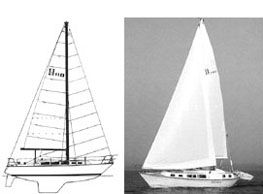
Leon Slikkers is a boatbuilding legend. Chris Scott, who has worked with him for over three decades, knows the story well:
“Leon grew up on a farm in Michigan. I doubt he ever saw the ocean. What stood out then, as it does now, was his craftsmanship and ingenuity. For instance, he made his own tractor from used car parts. After the war he left the farm and went to work for Chris Craft [in Holland, Michigan]. He had a good job running the shop that made hard tops, but , even with a mortage and a young family to feed, he decided to go out on his own. ‘I can build a better boat.’
“He began in his garage, building 15- and 17-foot runabouts. From there he grew Slickcraft until AMF came and bought it in the early ’70s. The sale included a non-competition agreement for five years.
“Slikkers couldn’t sit on his money, though, so in 1973 he started S2 to build sailboats. Building on the niche that he’d established in powerboats, his original aim was a series of ‘well-detailed, nicely built, high-quality trailerables.'”
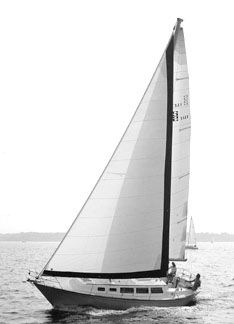
Along with the differences between sail and power, Slikkers ran into the problems of pushing premium products in a price-competitive arena. “And those early boats weren’t wonderful,” Scott says. “The joke was that S2 stood for “slowly sideways. They weren’t very salty looking, either.”
Slikkers, however, was a quick study. By the late ’70s the company had developed a full series of cruising auxiliaries. The new boats continued the Slikkers attention to detail and solid craftsmanship. Sailing performance and styling were improved, and the second wave of S2 sailboats helped people forget the ugly ducklings.
The Slikkers story continued. The “third wave” was a successful foray into high-performance boats, with the Graham & Schlagater-designed Grand Slam series—7.9 meter, 9.3, and 10.1. (The 7.9 was twice MORC National champion.) Then, in the early ’80s, Slikkers read the shrinking sailboat market and returned to building powerboats—this time the Tiara series. He retooled twice for limited orders from established sailboat classes (a fleet of 7.9s was wiped out in a hurricane, for instance) but abandoned sailboats for good in 1986.
Tiara (along with its companion line, Pursuit) still thrives. From Holland the company has grown to encompass plants in Florida and North Carolina. Leon’s sons, David and Bob, are at the helm, but Leon continues to maintain an office in the Holland plant and is “more active than you can imagine,” says Scott. Along the way he managed to acquire the assets of his original Slickcraft company at a fraction of the price that he was originally paid for it.
Introduced in 1977, the S2 11.0 reflects the maverick disposition of her makers, the quest for a better mousetrap, and the market savvy of a successful entrepreneur. She was built in both aft and center cockpit versions (roughly 160 of each type were sold). She has weathered the intervening quarter century well. The owners we queried were universally upbeat about her durability and sailing ease.
Design Often credited to the “S2 Design Team,” the 11.0 was actually designed by Arthur Edmunds. A veteran of the sailboat projects initiated by Chris Craft in the late ’60s (Commanche, Apache, et al), Edmunds was called upon by Slikkers to draft the lines for his cruisers. Largest of the bunch, the 11-meter was to combine modern sailing performance, an attractive layout, contemporary styling, and meticulous construction. Says Scott, “Leon left Arthur’s lines alone below the water, but the ‘team’ concept came from the fact that he had tremendous influence on everything else.”
Perhaps the best way to describe the 11.0’s sailing characteristics is “straight down the middle.” In an era when IOR bulges and bumps were visible even on cruising boats, Edmunds opted instead, in almost all cases, for “the mean.” Her 11′ 11″ beam is substantial, but it’s regular and fairs nicely into waterlines that give her a symmetrical “footprint” or waterplane, meaning that as she heels, her shape in the water is only minimally distorted. This is one of the sources of her light, mannerly helm.
She has the sailplan proportions of her day—masthead rig, small main, overlarge foretriangle. Modern cruisers have come to appreciate larger, controllable mainsails and smaller, more easily handled headsails, but that’s not a combination you’ll easily find in boats of her vintage.
It’s hard to recall that there was a day when all sailing controls weren’t led to the cockpit, but the 11-meter was a pioneer in that regard.
The boat has a longish fin keel that strikes a balance between the deeper, thinner foils of today and the full-length keels they’ve evolved from. In order to encapsulate the considerable (6,000-pound) ballast, however, Edmunds was forced to make the keel very thick in section. In addition to adding to parasitic drag the thick keel produces less lift than might a modern NACA-inspired or suitably engineered foil. This all tends to decree middle-of-the-pack performance, especially upwind.
Her rudder is lower in aspect ratio than those that have followed, and it is supported by a vestigal skeg. Both of these factors reduce turning efficiency, but cruisers get some compensating confidence from the protection afforded by the skeg.
Contemporary cruising boats tend to have longer waterlines and stems that are more nearly plumb than the 11-meter. There’s good reason that boats have evolved toward longer waterlines, narrower entries, and flatter waterplanes—they go faster. But yesterday’s cruisers, even yesterday’s “modern” boats like the S2, offer some compensations. Certainly the foredeck on the 11.0 is kept relatively dry by her marked overhang forward. Certainly her look is more balanced and graceful due to her overhangs fore and aft. Her reverse transom works nicely with the rising line of her overhanging counter to form one of the aesthetic achievements of the boat.
In profile we can’t help but wince a bit at her oversized windows. While they certainly make the interior brighter and more habitable, they involve three jumbo-sized cutouts in the cabin trunk—big enough to pose a risk, in our view, in breaking seas. The rest of her styling elements—the marriage between a relatively straight sheerline and a slightly forward-leaning housetop, the stem and stern angles—all work together well.
When Slikkers introduced the 11- meter, the most popular auxiliary in the world over 30 feet was Morgan’s Out Island 41, which at that time was closing in on 500 sold. Morgan attempted to capitalize on this acceptance with a smaller boat, a 36-footer built around the same open feel, the same center cockpit convenience and aft cabin privacy that made the 41 so popular. Despite being built on the hull of a racing design and being able to sail circles around its larger Out Island cousin, the Out Island 36 didn’t come close to matching the 41’s popularity. Neither did the Out Island 33.
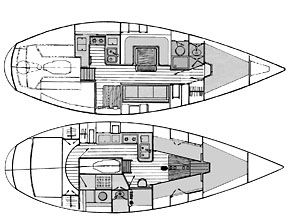
Is a 36-footer too small to be a good aft-cabin cruiser? Not if you’re willing to separate appearance from effectiveness. The center cockpit version of the 11.0 has a very workable layout. Passage fore and aft can be accomplished either through a passageway (with galley ranged outboard) to port or a double-doored head (to starboard). The galley is close to the companionway and in the pitching center of the boat—good for ventilation, communication, and comfort. The saloon is pinched a bit by being shoved forward, but it works. We think it would work even better if the space devoted to a navigator’s electronic center had been minimized to achieve a bit more elbow room.)
Take a look at the two versions in profile, however, and you might have second thoughts. While the aft cockpit 11.0 has a comforting familiarity, the aesthetic adjustments called for to accommodate to the tall and bulging center cockpit boat are major. And, perched way atop the thing at the wheel, how protected, comfortable, and at ease will you feel? We sailed the aft cockpit model, so this is just speculation. Suffice it to say that, in return for the privacy of well-separated cabins and the convenience of sailing the boat from the middle, there are some prices to be paid.
Construction The mid-sized sampling of owners who weighed in on the 11.0 made her durability and sound construction their central theme. Said one owner of a center cockpit boat, “On the trip from San Diego to Hawaii we had several days of 12- to 18-foot seas and winds up to 55 knots. The boat handled everything with no problems. We felt very safe.”
Most rate the boat’s strength, quality, and equipment as well above average. “A lot of that,” says Scott, “is the integral keel. Molding the whole boat instead of bolting the keel onto it makes it much stronger.”
The hull is solid fiberglass. The deck is cored with end-grain balsa in the way of the walkways. During the production run of the 11-meter, blisters popped their ugly heads onto the marine scene. Says Scott, “We did a lot of research right away. We had been using vinylster resin from the start. What we wound up doing was replacing the exterior layer of cloth with chopped matt to eliminate the problems caused, we felt, by the binder in the cloth. Up to that point we’d always thought the chopper gun was a quick and dirty tool that we’d never use. We were among the first in the industry to come up with a five-year anti-blister warranty in 1984.”
Just a single owner in our sample reported blistering. His, he said, “are widely spaced and have shown no change since 1983.”
S2’s hull-deck joint is simple, well-engineered, and has held up well: The hull molding has an inward-turning flange, onto which the deck molding is dropped. The joint is bedded in a flexible sealant, and through- bolted on six-inch centers by bolts passing vertically through the entire height of the slotted aluminum toerail. The joint is also through-bolted across the stem. Deck leaks seem not to be a problem.
The chainplates, however, have been a source of aggravation to several owners. One claims that they must be rebedded every season in order to keep them watertight.
Slikkers designed and made the hatches for the 11.0, rather than buying them from a vendor. From molding the surrounding lip into the deck tooling, to shaping the Lexan, to sizing and making the gasket, developing the sealant, and cutting the teak non-skid strips that guard it, the entire operation was done in-house. “Gelcoat was the premium available,” says Scott. “Our factory was one of the first to be climate-controlled. We pioneered the practice of building the boats in the molds so that they’d have maximum support.”
The 11-meter boats were sold with a variety of engines, including Universal, Volvo, and Yanmar. We saw no engine complaints, with the exception of one Volvo MD 17C (with saildrive) that had problems with overheating until a separate through-hull was installed for raw water intake.
S2s were priced above the market average, but lots of sailors were willing to pay for what they delivered. Praise is not unanimous, however. Though no one has reported structural problems, one sailor sees the wooden mast step and relative “lack of structural support for the keel-stepped mast” as a potential problem. The recessed grab rail atop the cabin house is also, we noticed, the sort of “finger breaker” design that is neither accessible nor hefty enough to be a useful handhold in a time of genuine need.
Performance The 11.0 displaces 15,000 pounds. That means that she doesn’t get thrown around by the waves. It also means that it takes a lot to get her going. You can make the case that weight and momentum are advantages in a seaway, but our experience, and the evolution of modern cruising design, suggests that the less weight for a given sail power, the more efficient (and certainly the more sprightly) the sailboat. The trend over the quarter century since the 11.0 was designed has been toward lighter and lighter cruisers, and there are few sailors today who feel that adding pounds adds to sailing performance.

The 11.0’s sail area/displacement ratio of 17.2 is moderate, but it’s up against a displacement/length ratio of nearly 300. She has more wetted surface (by something approaching 25 percent) than a typical modern cruiser might. She is, in short, no speed demon. The lighter the breeze and the closer into it the course, the more she tends to suffer for the design trends of her era.
Due to her stability, predictable handling, and ease of maneuvering, though, she can be fun and forgiving to sail. She’s quite stiff, despite the fact that she derives relatively little form stability from her slack-bilged hull. Her T-shaped cockpit, an innovation in its day, limits the size of the wheel (36-inch) so that steering from the rail isn’t comfortable or efficient. The cockpit is not as deep nor the coamings as high as we would like to see on a boat that ventures offshore. The cockpit locker, on the other hand, is big enough to afford access to the port side of the engine, as well as space for generator, watermaker, and plenty of stowage. Furthermore, it’s compartmentalized intelligently.
Accommodations From its oversized (6′ 5″ x 6′ 4″) forward berth to its generous (6′ 5″ x 3′ 9″) quarter berth aft, the S2’s interior is more than a little accommodating. Throw in places to sleep for three more and she truly fulfills the “boat with beds” ideal that was the controlling interior principle in the ’70s and ’80s. But she’s more than a bunkhouse. Her galley, wrapped around a “serve-through counter,” was ahead of its time in terms of function, elbow room, clever use of space, and integration with the rest of the interior.
Using the quarterberth as a seat for the nav table is an acceptable accommodation in a boat this small. A surprisingly large hanging locker, well-finished drawers, and a jumbo head with shower are among the other details that have make the boat livable.
Whether the center-cockpit version “succeeds” in your eyes depends upon the priority you put on sociability belowdecks. The necessary functions—cooking, sleeping, and head-going—receive more space and attention in the twin-cabin set-up. The saloon is nudged forward and made “cozier” in the process—not necessarily a bad thing.
Having separate cabins is a boon for couples that cruise together. If that’s what’s on your mind, the 11.0 offers a boat that’s sized and priced to make double-cabin sailing a reality. One owner, who is 6′ 5″, reports that “I not only have room to stand up and lie down, but in weeks at a time of cruising I’ve never gotten that ‘closed in’ feeling.”
Conclusions Most owners rated the 11-meter’s original equipment as good to adequate. One said, however, “make sure that primary and halyard winches are big enough. My boat had Lewmars that were very undersized. I’ve moved to #43 (primary) and #42 (halyard) respectively.” Another wrote, “The original refrigeration wasn’t adequate for living aboard. We replaced it with Adler Barbour 20 years ago and it’s still going strong.”
Superior gelcoat quality is part of the S2 reputation. Most owners are pleased with the way theirs have held up over the years. While the boats were never built with an epoxy or any other form of barrier coat, the research that Slikkers and company did in the ’80s, and the use of vinylester resin, seems to have yielded hulls that have resisted blistering well.
The boats that Slikkers built, both aft and center cockpit, are cruisable in the extreme when it comes to accommodation and capability. The more you demand from them in terms of sailing sizzle, the more their slips show, but considering the high level of construction in the hull, deck, and cabinetry, the generally good standard equipment list, and the thoughtful design details throughout, it’s easy enough to see why these boats have held their value over the years. According to the BUC Used Boat Price Guide, a 1981 model S2 11.0 (in both center- and aft-cockpit versions) has a retail value range today between $48,000 and $52,000 (Northeast and Mid-Atlantic region).
There’s a good deal of information on S2 boats on the Web. In particular check the pages at www.angelfire.com/mi/loosecruise/S2/index.html .
Contact – Tiara Yachts, 725 E. 40th St., Holland MI, 49423; 616/392-7163; www.tiarayachts.com .
Also With This Article Click here to view “Owner’s Comments.”
RELATED ARTICLES MORE FROM AUTHOR
I bought an S2 11.0A (36′ aft cockpit) a couple of years ago. I had been looking at a Hunter Cherubini 37′ cutter rigged boat that was said to be the heartist boats built in it’s time, and seemingly blue-water capable. That deal didn’t happen, but a year later I found my 36′ S2 and in researching the vessels specifications, I saw that it wasn’t exactly a blue-water boat, but it definitely fit the mold of a coastal cruiser. 75 galons of water, 50 gallons of fuel, 36hp engine, vestigal skeg rudder and encased lead keel. The quality of construction was noted in most online articles I read; and just as most people said, I wouldn’t find any blistering of the fiberglass on this four-decades old boat, however, up until this past season, I was actually considering painting the hull, the tan gelcoat was chalky and I had always wanted a dark blue hull anyway, but that was before I spent a couple of days polising the gelcoat. The color and shine was restored to that of a much younger boat, doing that and stripping the paint off the teak toerails and oiling them, has gotten me several complments from other boaters. The S2 is shaping up to be the type of boat I’ve always admired, a vessel with classic lines, nice overhangs, moderate freeboard, a heart-shaped transom, with golden-orange teak and stainless steel glistening in the sun. But while some of those items are cosmetic, and while I haven’t been in many wicked conditions yet with this boat, I’ve been in a couple that have proven to me that those old-style overhangs, along with the overall hull shape, is a great design in large swells when winds are high and when you are plowing through oncoming wave-sets that are as close together as possible without breaking over each other. And while the interior isn’t designed with an “open plan” like a modern boat, you do have confidence in rough conditions that you’re not going to be allowed to get very far if the boat makes an unexpected movement when you’ve braced yourself in the galley while making something for the crew. What is also notable is the quality of the interior woodwork. My wife spent a couple of hours treating all the interior teak with lemon oil, which gave the woodwork a fresh luster without feeling oily or tacky. The boat is exceptionaly dry, maybe owing to the care by the single owner the boat had had for nearly 40 years, before us. But I would guess that even through multiple owners, as long as one of them didn’t go “redesigning” the interior, or exterior for that matter, any S2 would still be a boat that is functional and updateable. If you like a more classic looking boat with teak insead of aluminum, formica, or plastic, then this is a boat that was at the top of it’s class for the price at the time, and in my opinion, has aged well as far as design and looks.

LEAVE A REPLY Cancel reply
Log in to leave a comment
Latest Videos

Cabo Rico 34 Boat Review

Super Shallow Draft Sailboat: The Leeboard Sharpie

Hans Christian 41T – Boat Review

Seven dead after superyacht sinks off Sicily. Was the crew at...
Latest sailboat review.

- Privacy Policy
- Do Not Sell My Personal Information
- Online Account Activation
- Privacy Manager
- Latest News

- July 17, 2020
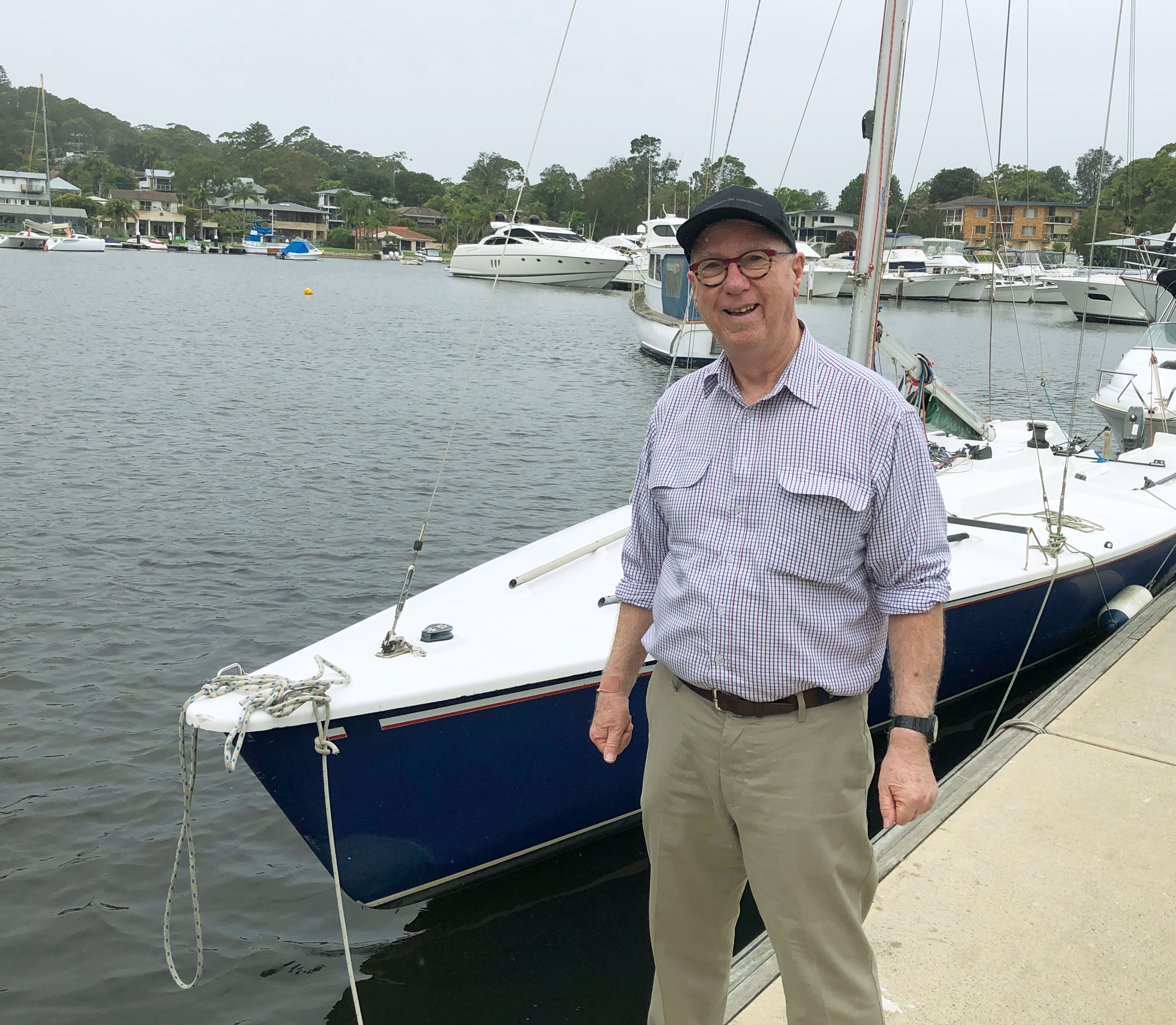
- Latest News , Racing , Travels
Ron Holland with the RPAYC 11 Metre Fleet
- February 13, 2020

11M Naval Special Warfare Rigid Inflatable Boat
Brief specifications.
| Length | 35’ 11″ (11 Meters) |
| Beam (inflated tube) (deflated tube) | 10’ 7″ (3.2 Meters) 8’ 9″ (2.6 Meters) |
| Maximum Draft | 2’ 11″ (0.9 Meters) |
| Operating Draft | 1’ 8″ (0.5 Meters) |
| Maximum Speed | 40+ Knots |
| Cruise Speed | 30+ Knots |
| Displacement | 18,000 Lbs. |
| Hull Construction | FRP (Composite) |
| Propulsion | Twin 3126 Caterpillar or Cummins QSB 6.7 480-550 HP with ZF Gears Diesel Engines, 470 HP @2950 RPM with KaMeWa/Rolls Royce Waterjets |
| Crew / Pax | Up to 13 Total |
11M Naval Special Warfare Rigid Inflatable Boat Drawings
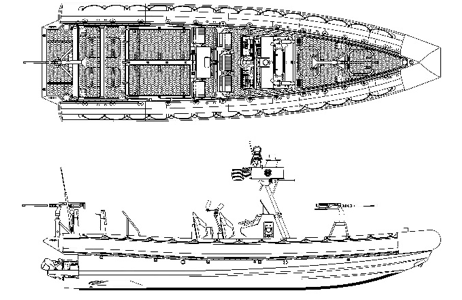
- Previous Project
- Next Project
All Rights Reserved, United States Marine, Inc
- Boats & Vessels
- About / Mission / Facilities
- Quality & Craftsmanship
- Service and Logistics Support
The 11 meter is a 33.8ft fractional sloop designed by Ron Holland & Rolf Gyhlenius and built in carbon fiber or composite by Precision Boat Works since 1990.
350 units have been built..
The 11 meter is an ultralight sailboat which is a very high performer. It is very stable / stiff and has a low righting capability if capsized. It is best suited as a racing boat.
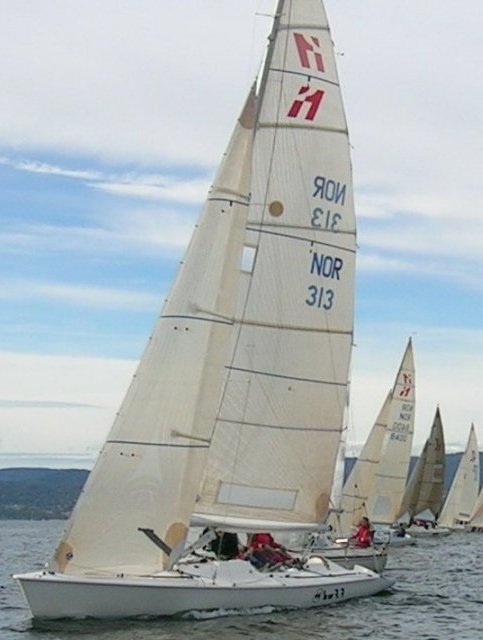
11 meter for sale elsewhere on the web:

Main features
| Model | 11 meter | ||
| Length | 33.80 ft | ||
| Beam | 8.20 ft | ||
| Draft | 5.90 ft | ||
| Country | United states (North America) | ||
| Estimated price | $ 0 | ?? |
Login or register to personnalize this screen.
You will be able to pin external links of your choice.

See how Sailboatlab works in video
| Sail area / displ. | 28.36 | ||
| Ballast / displ. | 45.31 % | ||
| Displ. / length | 80.89 | ||
| Comfort ratio | 11.41 | ||
| Capsize | 2.16 |
| Hull type | Monohull fin keel with bulb and spade rudder | ||
| Construction | Carbon fiber or composite | ||
| Waterline length | 26.90 ft | ||
| Maximum draft | 5.90 ft | ||
| Displacement | 3527 lbs | ||
| Ballast | 1598 lbs | ||
| Hull speed | 6.95 knots |

We help you build your own hydraulic steering system - Lecomble & Schmitt
| Rigging | Fractional Sloop | ||
| Sail area (100%) | 450 sq.ft | ||
| Air draft | 0 ft | ?? | |
| Sail area fore | 163.80 sq.ft | ||
| Sail area main | 245.77 sq.ft | ||
| I | 32.18 ft | ||
| J | 10.18 ft | ||
| P | 36.09 ft | ||
| E | 13.62 ft |
| Nb engines | 1 | ||
| Total power | 0 HP | ||
| Fuel capacity | 0 gals |
Accommodations
| Water capacity | 0 gals | ||
| Headroom | 0 ft | ||
| Nb of cabins | 0 | ||
| Nb of berths | 0 | ||
| Nb heads | 0 |
Builder data
| Builder | Precision Boat Works | ||
| Designer | Ron Holland & Rolf Gyhlenius | ||
| First built | 1990 | ||
| Last built | 0 | ?? | |
| Number built | 350 |
Other photos
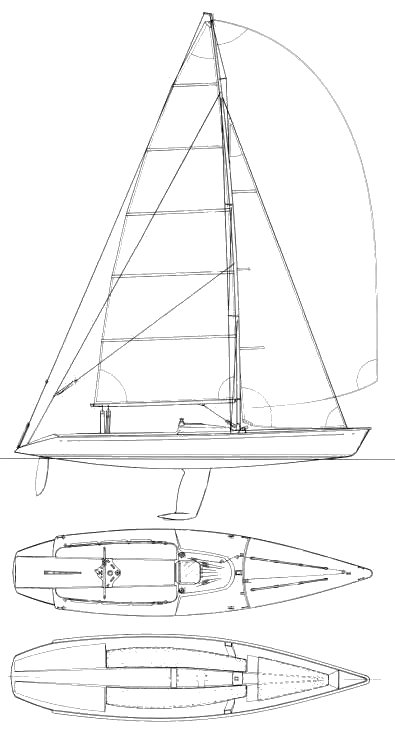
Modal Title
The content of your modal.
Personalize your sailboat data sheet
Phone Number
Willard Marine -
Search our Website
Breadcrumbs.
- Rigid Inflatable Boats
- / SEA FORCE® 1100
SEA FORCE® 1100 Previous Next
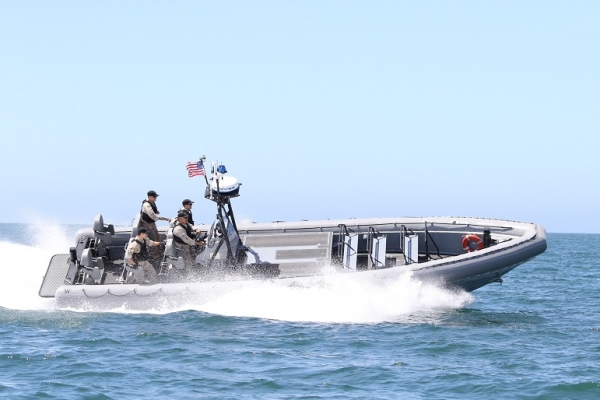
Willard Marine’s SEA FORCE®1100 is designed and built for the most discerning mariners in the world: the United States Navy. For 15 years, we have collaborated with the Navy for today’s most rugged and reliable 11-meter rigid hull inflatable boat (RIB) that can accommodate up to 26 crew members. It is designed with a deep-v hull for maximum stability, center console and non-skid deck. The U.S. Navy and many allied foreign military agencies rely upon these durable RIBs for patrol, rescue, and Visit, Board, Search and Seizure (VBSS) operations performed around the world. It is currently built with Cummins QSB 6.7-liter 380-hp twin engines paired with Hamilton Jet HJ292 water jets, but similar version is available with twin Cummins QSB6.7 480-hp engines and Hamilton Jet HJ292 water jets. Each vessel has aft seating plus removable seating for additional people on the foredeck and a multi-chamber, 40-ounce polyurethane tube that is exceptionally strong, puncture resistant, UV-coated and provides buoyancy and reduced vessel weight for maximum performance, fuel economy and safety at sea. Please contact us for more information about this RIB and other Willard Marine vessels.
*Length Overall (LOA) is defined as the distance from the furthest bow appendage to the furthest stern appendage including the tube, collar or fendering; it does not include the propulsion system or optional features such as engine guards or swim steps. Published boat specifications contained herein can be adjusted to accommodate your mission type and desired boat design.
Great choice! Your favorites are temporarily saved for this session. Sign in to save them permanently, access them on any device, and receive relevant alerts.
- Sailboat Guide

1980 S2 Yachts 11 Meter A
- Description
Seller's Description
This 1980 S2 11 Meter Aft cockpit is a great example of this classic cruiser/racer sailboat.
This boat has only had 3 owners and was cruised extensively by the previous owner.
According to the owner, the Yanmar 40 engine has an SD50 Saildrive. The seller estimates the hours at 700. There was a Raymarine Autohelm installed before the last major cruise which can be connected to the Garmin GPSmap 546s Chartplotter for cruising.
The sail inventory consists of a battened main, a roller furling 155 Genoa, and a Spinnaker with a whisker pole. The windlass can be operated from the bow or the helm.
Also included is an outboard lift and a BBQ attached to the stern rail. There are davits installed ready for a dinghy with a solar panel mounted over the davits.
Below decks, there is ample room for the captain and guests with sleeping for six including the V-Berth, convertible dinette, quarter berth, and a sea berth. The galley is fully equipped with a propane cooktop and oven, a freezer that makes ice, and a large enough refrigerator to store the beer keg connected to the beer tap on the counter!
The electronics on this boat include a single-sideband radio, VHF with a cockpit mic, and a Sony marine stereo.
To add to the comfort, there is a 16,000 BTU ducted A/C system. This boat is just in need of some TLC to get her ready for your next cruise.
Rig and Sails
Auxilary power, accomodations, calculations.
The theoretical maximum speed that a displacement hull can move efficiently through the water is determined by it's waterline length and displacement. It may be unable to reach this speed if the boat is underpowered or heavily loaded, though it may exceed this speed given enough power. Read more.
Classic hull speed formula:
Hull Speed = 1.34 x √LWL
Max Speed/Length ratio = 8.26 ÷ Displacement/Length ratio .311 Hull Speed = Max Speed/Length ratio x √LWL
Sail Area / Displacement Ratio
A measure of the power of the sails relative to the weight of the boat. The higher the number, the higher the performance, but the harder the boat will be to handle. This ratio is a "non-dimensional" value that facilitates comparisons between boats of different types and sizes. Read more.
SA/D = SA ÷ (D ÷ 64) 2/3
- SA : Sail area in square feet, derived by adding the mainsail area to 100% of the foretriangle area (the lateral area above the deck between the mast and the forestay).
- D : Displacement in pounds.
Ballast / Displacement Ratio
A measure of the stability of a boat's hull that suggests how well a monohull will stand up to its sails. The ballast displacement ratio indicates how much of the weight of a boat is placed for maximum stability against capsizing and is an indicator of stiffness and resistance to capsize.
Ballast / Displacement * 100
Displacement / Length Ratio
A measure of the weight of the boat relative to it's length at the waterline. The higher a boat’s D/L ratio, the more easily it will carry a load and the more comfortable its motion will be. The lower a boat's ratio is, the less power it takes to drive the boat to its nominal hull speed or beyond. Read more.
D/L = (D ÷ 2240) ÷ (0.01 x LWL)³
- D: Displacement of the boat in pounds.
- LWL: Waterline length in feet
Comfort Ratio
This ratio assess how quickly and abruptly a boat’s hull reacts to waves in a significant seaway, these being the elements of a boat’s motion most likely to cause seasickness. Read more.
Comfort ratio = D ÷ (.65 x (.7 LWL + .3 LOA) x Beam 1.33 )
- D: Displacement of the boat in pounds
- LOA: Length overall in feet
- Beam: Width of boat at the widest point in feet
Capsize Screening Formula
This formula attempts to indicate whether a given boat might be too wide and light to readily right itself after being overturned in extreme conditions. Read more.
CSV = Beam ÷ ³√(D / 64)
A = Aft Cabin. (The S2 11.0 C is a center cockpit version.) Shoal draft version: 4.67’/1.42m. Delivered with Universal, Volvo, or Yanmar engines.
This listing is presented by PopYachts.com . Visit their website for more information or to contact the seller.
View on PopYachts.com
Embed this page on your own website by copying and pasting this code.
- About Sailboat Guide
©2024 Sea Time Tech, LLC
This site is protected by reCAPTCHA and the Google Privacy Policy and Terms of Service apply.

Search boats for sale
Sailboats - new and used - buy and sell - length 11-12 m

Jeanneau Sun Odyssey 40

Bénéteau Océanis Clipper 373
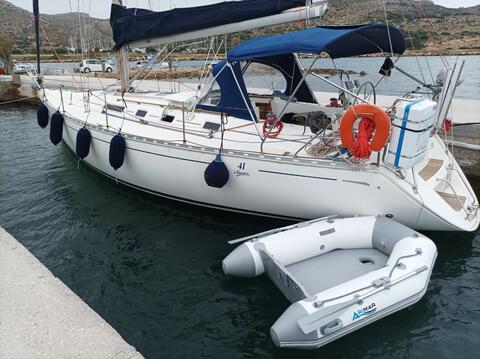
Dufour 41 Classic
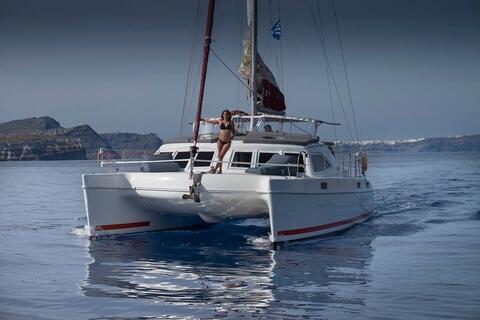
Broadblue 385
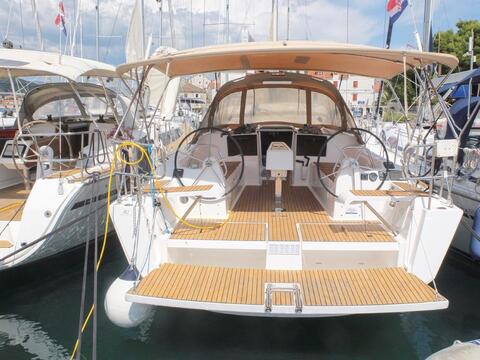
Dufour 382 Grand Large
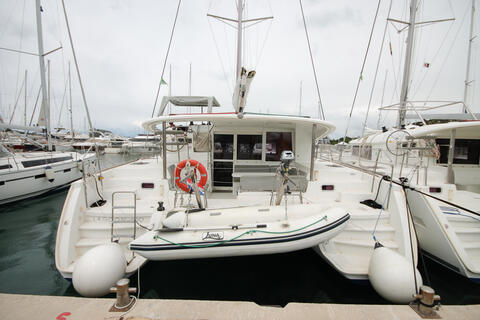
Fountaine Pajot Athena 38

Custom Built 40 ft Trimaran
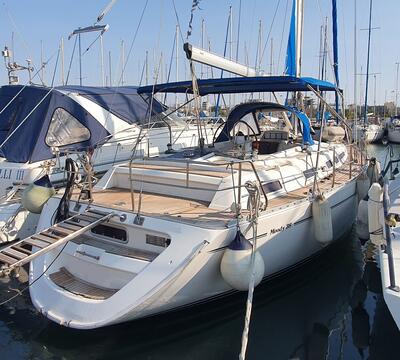
Jeanneau Sun Odyssey 389
David Hillyard Hau Turu

- Used motorboats
- Used sailboats
- All used boats
- New motorboats
- New sailboats
- All new boats
- Boat brands
- Boat models
- Boats ad visibility booster pack
- Boat quotation
- Frequently asked questions
11 meters used sailboats for sale
Wauquiez centurion 36, comar comet 460, ketch classic boat, dufour 385 grand large, jeanneau sun odyssey 36i, beneteau oceanis 373 clipper, dehler 36 cws, dufour gib sea 106, dehler 36 db, robertson and caine leopard 38, contrast 362, bavaria 33 cruiser, kirie feeling 1090, westerly 36 corsair, aubois 1050, van de stadt 36, clubswan 36, nautor swan 36, related searches.

IMAGES
VIDEO
COMMENTS
The 11 Meter is a racing keelboat, built predominantly of cored fiberglass.It has a fractional sloop rig, a raked stem, a sharply reverse transom, an internally mounted spade-type rudder controlled by a tiller and a fixed fin keel with a weighted lead bulb. It displaces 3,527 lb (1,600 kg) and carries 1,598 lb (725 kg) of ballast. [1]The boat has a draft of 5.90 ft (1.80 m) with the standard keel.
11 METER. Save to Favorites . Beta Marine. BOTH. US IMPERIAL. METRIC. Sailboat Specifications Definitions Hull Type: Fin w/bulb & spade rudder: Rigging Type: Fractional Sloop: LOA: 33.80 ft / 10.30 m ... Kelsall Sailing Performance (KSP): Another measure of relative speed potential of a boat. It takes into consideration "reported" sail area ...
The 11:Metre One Design is a great boat for racing and day sailing. Comfortable, responsive and easy to sail. Fresh bottom job, full instrumentation, Genoa, high-tech lines (several new), many improvements, outboard, stereo, trailer, LOTS of parts & extras. ... 11:Metre Sailboat information. 11:Meter 11 Metre 11 Meter 11Metre 11Meter ...
The 11-meter sailing boat, also known as the 11-meter One-Design, is a class of sailboat that was designed for racing purposes. It is a keelboat that measures approximately 11 meters in length, hence the name. The 11-meter class was established in the 1970s and gained popularity as a competitive racing boat. It was designed to be a strict one ...
California. $15,000. Description: 2002 11 Meter One Design race ready sailboat built by Precision Designs. PHRF rating of 71, it is a fast boat in really good shape. -New sails 2023 main and jib. -New Spinnaker 2022 S2. -New Running rigging 2022. -New bottom job 2022 with spray finish and 600 grit sand finish.
The 11: Metre One Design aka 11 Meter or 11 Meter OD aka 11 Meter OD is a sailboat designed by the New Zealander maritime architect Ron Holland together with Rolf Gyhlenius in the early nineties. Several hundred boats have been produced. ... An outboard motor is often used on this boat. In that case 11: Metre One Design will typically require a ...
A veteran of the sailboat projects initiated by Chris Craft in the late '60s (Commanche, Apache, et al), Edmunds was called upon by Slikkers to draft the lines for his cruisers. Largest of the bunch, the 11-meter was to combine modern sailing performance, an attractive layout, contemporary styling, and meticulous construction.
11 Meter is a 33′ 9″ / 10.3 m monohull sailboat designed by Ron Holland and built by Precision Boat Works starting in 1990. ... Precision Boat Works Association 11 Meter One Design Assoc. # Built 350 Hull Monohull Keel Fin + Bulb Rudder Spade Construction FG w/core,Composite ...
11 metre one design sail racing. 209 likes. Follow the sail racing: Erik Ekedahl & Martin Krensler & Magnus Löfvendahl + crew
Eleven 11's at Royal Prince Alfred Yacht Club in Australia, July 2020. The 11 metre 'One Design', the world's first official 'Sports Boat,' was designed to create affordable high performance sailing. Ron's 11 MOD was the second to be launched and he campaigned her in England and Ireland.... Read More. July 17, 2020.
944. Jul 27, 2018. #3. Alan H! In Sweden it is very low activity in 11 metre One Design. A possibility is that the class rule was not fully developed. One boat in Sweden had a lot of internal reinforcements. The feel of "one-design" was lost.
2' 11″ (0.9 Meters) Operating Draft: 1' 8″ (0.5 Meters) Maximum Speed: 40+ Knots: Cruise Speed: 30+ Knots: Displacement: 18,000 Lbs. ... 470 HP @2950 RPM with KaMeWa/Rolls Royce Waterjets: Crew / Pax: Up to 13 Total: 11M Naval Special Warfare Rigid Inflatable Boat Drawings. View Larger. View Larger. View Larger. View Larger. View Larger ...
11 Meter One Design Assoc. www.11mod.info. International 11:Metre One Design Class Association. ... 1 Sailboats / Per Page: 25 / Page: 1. 0 CLICK to COMPARE . MODEL LOA FIRST BUILT FAVORITE COMPARE; 11 METER: 33.80 ft / 10.30 m: 1990: ShipCanvas. KiwiGrip. Bruntons. Rudder Craft ...
The 11 meter is a 33.8ft fractional sloop designed by Ron Holland & Rolf Gyhlenius and built in carbon fiber or composite by Precision Boat Works since 1990. 350 units have been built. The 11 meter is an ultralight sailboat which is a very high performer. It is very stable / stiff and has a low righting capability if capsized.
Willard Marine's SEA FORCE®1100 is designed and built for the most discerning mariners in the world: the United States Navy. For 15 years, we have collaborated with the Navy for today's most rugged and reliable 11-meter rigid hull inflatable boat (RIB) that can accommodate up to 26 crew members.
General Characteristics, 11 meter Naval Special Warfare RIB. Propulsion: Dual Caterpillar 3126 DITA, 6 in-line cylinder diesel, turbocharged, aftercooled. Length: 35 feet, 11 inches (11 meters ...
11Metre One Design preowned sailboats for sale by owner. 11Metre One Design used sailboats for sale by owner. Home. Register & Post. View All Sailboats. Search. Avoid Fraud. ... 26.11' Catalina 250 MK II Wing Keel Westbrook, Connecticut Asking $24,000. 30' Canadian Sailcraft Cs30 Marina Gosselin ST-Paul-de-lile-aux-noix Quebec
Find Trojan 11 Meter Express boats for sale in your area & across the world on YachtWorld. Offering the best selection of Trojan boats to choose from.
Seller's Description. This 1980 S2 11 Meter Aft cockpit is a great example of this classic cruiser/racer sailboat. This boat has only had 3 owners and was cruised extensively by the previous owner. According to the owner, the Yanmar 40 engine has an SD50 Saildrive. The seller estimates the hours at 700.
Buy sailboats 11 Meter. Sailboats 11 Meter for sale on DailyBoats.com are listed for a range of prices, valued from $14,735 on the more basic models to $14,735 for the most expensive. The boats can differ in size from 10.35 m to 10.35 m. The oldest one built in 1991 year. This page features 11 Meter boats located in countries: Kingdom of the ...
Your search: sailboat + length 11-12 m Create alert. Edit search. Leopard 38. Leopard 38 Sailboat / sailing catamaran: Robertson & Caine, used boat Length x beam: 11.43 m x 6.04 m, 11.43 x 6.04 m built: 2011, cabins: 4 Engine: Yanmar 3YM30C, 2 x 29 hp (21 kW), diesel € 190,000
All our 11 meters used sailboats for sale near you. Compare prices. All our 11 meters used sailboats for sale near you. Compare prices. ... Total length (meters) 11 - 11. Top filters. Price. Less than €20,000. From €20,000 to €50,000. From €50,000 to €100,000. From €100,000 to €200,000.
Look for the exact boat you need with our new search! Search . Default Search. Boats PWCs. Boats for Sale ... Model: 11 Meter Express Remove Filter model:11-meter; Filter Boats By. Condition All New (1) All In Stock - New and Used (9) Used (8) Boat Type Power (9) Class Express Cruiser; Convertible;